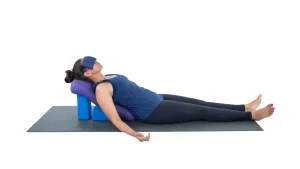
Finding an enjoyable workout tailored specifically to you and keeping yourself motivated are keys to sticking with any exercise program.
Functional fitness training first made an appearance in the survey for the first time in 2021 and seeks to improve balance, coordination and functional strength to aid everyday activities of living for older adults in particular.
Body & Mind
One trend that emerged during the pandemic was an increased focus on holistic health, which encompasses both physical and mental fitness. This included accepting that exercise has benefits across life stages and abilities; moderate intensity aerobic training had particularly strong evidence supporting its immune boosting properties.
After months of being indoors due to the lockdown, many people are eager to return outside and resume their favourite activities – be they hiking, golfing or running group fitness classes; lower intensity workouts such as yoga; or group fitness activities for example hiking and golfing classes.
High Intensity Interval Training (HIIT) remains one of the hottest fitness trends, thanks to at-home equipment like Peloton. Exercising to music has also become increasingly popular; many studios now offer workout classes centered around certain genres or release workout playlists specifically tailored for this activity.
Outdoor Exercise
Exercise outdoors can be an effective way to boost motivation for workouts by adding an element of fun and excitement. Studies have indicated that positive experiences during an exercise routine increase its likelihood of repetition – so taking this fitness trend outdoors could be just the way to get people hooked on working out!
Outdoor environments offer an ideal place for exercise and training, which is both accessible and cost-effective. Neighborhood streets, parks and hills make great spots for walking, jogging, cycling and boot camp style group classes; plus these settings often feature equipment and amenities to make training even simpler without going into a gym.
After being trapped inside during Covid lockdowns for so long, many are longing to experience outdoor fitness again. With that in mind, gyms and personal trainers should focus on including outdoor workouts into fitness programs starting in 2022.
Mindful Movement
Fitness trends that emphasize slow, mindful movements with an emphasis on breath and body awareness are becoming increasingly popular. Such practices include yoga, tai chi and qigong; though linked to particular philosophies or religions they appeal due to providing an opportunity for respite from our busy lifestyles.
As an example, when lifting weights, rather than thinking “ten more reps”, focus on how your muscles flex and stretch with every contraction. This helps you become more aware of each movement while training for a specific event.
As people turn their focus towards inner health rather than outward appearances, gyms must adjust their offerings. This could involve providing outdoor workouts such as cycling, hiking and jogging or even bootcamp style group fitness classes during daytime; members will then benefit from full workout without needing to set aside an hour for it each day.
Mindfulness
Mindfulness meditation is a form of meditation designed to help individuals manage their emotions and reduce stress levels. Mindfulness also teaches people how to remain present in each moment without reacting immediately when facing new situations; this may help individuals avoid engaging in self-destructive habits like eating an entire bag of chips in one sitting or forgoing physical exercise in favor of sitting in front of the TV instead.
Studies indicate that mindfulness may increase exercise-related motivation and self-efficacy as well as increase physical activity, yet its benefits remain uncertain. Fitness training could potentially supplement any benefits gained through mindfulness practice.
Composite indicator structural equation models were employed in a study comparing mindfulness meditation with moderate intensity exercise programs to estimate direct, indirect and total effect paths and correlations. Results demonstrated that both programs promoted both proximal outcomes (such as mindfulness self-efficacy during and post exercise) as well as indirect ones such as mental health and perceived stress; mindfulness served as the shared mediator between exercise-related outcomes.






